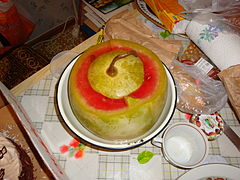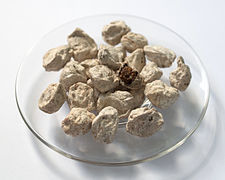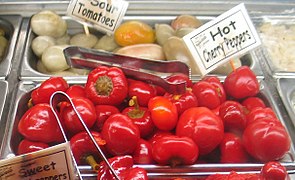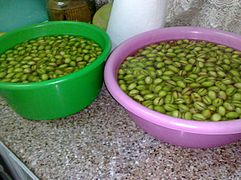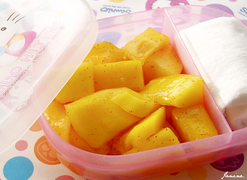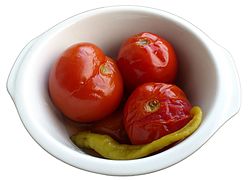User:Betty2702/sandbox
 | This is a user sandbox of Betty2702. You can use it for testing or practicing edits. This is not the sandbox where you should draft your assigned article for a dashboard.wikiedu.org course. To find the right sandbox for your assignment, visit your Dashboard course page and follow the Sandbox Draft link for your assigned article in the My Articles section. |
Beatriz's work log
[edit]- September 28, 2019- After seeing three articles I decided one and I read the article. I looked the current sources and a few links.
- September 29, 2019- Looked up information on Biography in Context. ( 3.0 hours)
- October 6, 2019- I read the original article and the new information I found again. ( 1.5 hour)
- October 6, 2019- Add more references ( 2.0 hours)
- October 18, 2019- I search images and add a new one (1.0 hour)
- October 27, 2019- I edit some information and work to the references (3.0 hours)
- October 24, 2019- I add images (1.0 hour)
References
[edit]
- Reference #1 Encyclopedia of Food and Culture (Vol.3) Author: Daphne L. Derven. Editor: Solomon H. Katz 2003 Publisher: Charles Scribners Sons.
- Reference #4 The Wall Streed Journal, Refrigerator Picklers: Summer Fruit, All Sealed Up. Karen Stabiner, Agust, 3 2016.
- Referencia #5 Mexconnect, Preeserving the Fall harvest: Mexican pickles and vinagrettes. Karen Hursh Graber. october 1, 2006.
Beatriz's edits to Pickled fruit
[edit]I made some editions about the article [[Pickled fruit]], I add information about some fruits, also about the state of Michigan
Pickled fruit refers to fruit that has been pickled.[1] Pickling is the process of food preservation by either anaerobic fermentation in brine or immersion in vinegar. Many types of fruit are pickled.[1] Some examples include peaches, apples, crab apple, pears, plums, grapes, currant, tomato and olives.[1][2] Vinegar may also be prepared from fruit,[2] such as apple cider vinegar.
I'm looking into more details on historical data about the origin of the pickled fruit manufacturing industries info.
For thousands of years in many parts of the world, pickles have been used as the main method to preserve fruits and other foods. There is evidence that thousands of years ago in Mesopotamia, Egypt, Greece, Rome and China people pickled different foods for preservation. Mayan culture in America to conserve food used tobacco, they used this ingredient to make pickled peppers. In ancient times the different cultures used the salt that was found naturally and the water to make the brine, which they used to pickle foods that cannot be eaten naturally, such as olives and some grains.[3]
Peaches
[edit]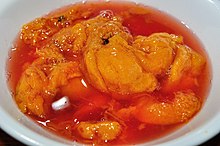

Pickled peaches may be prepared from medium-sized, non-melting clingstone peaches that are small-seeded.[1] In the United States prior to around 1960, some were prepared from small, unripe freestone peaches.[1] They may be prepared with sugar, cinnamon, cloves and allspice to add flavor.[citation needed] Pickled peaches may be used to accompany meats and in salads,[4] and also have other uses.
Pears
[edit]Pickled pears may be prepared with sugar, cinnamon, cloves and allspice to add flavor, and may be referred to as spiced pears.[1] They may be prepared from underripe pears.[5] Pickled pears may be used to accompany dishes such as roasts and salads,[6] among others.
Information about other fruits
Grapes
[edit]To picked grapes it is necessary to use white wine vinegar, water, kosher salt, sugar, cloves garlic, rosemary and dried chili flakes. Garlic, chili flakes and some other species make grapes a unique flavor.[7]
Cantaloupe
[edit]The cantaloupe is a summer season fruit, which can be pickled and refrigerated to be able to eat it during the rest of the year. The cantaloupe can be pickled using champagne vinegar, hot water, granulated sugar, ice, mustard seed, celery seed, Aleppo pepper and cinnamon stick.[7]
List of pickled fruits
[edit]
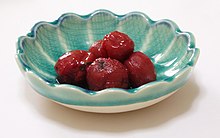
- Apple [8]
- Apricot [8]
- Barberry [8]
- Blackberry [8]
- Blueberry [10]
- Caper [11]
- Cherry [8]
- Citrus peel [10]
- Currant [1]
- Dates [8]
- Damson [8]
- Fig [10]
- Grape [1]
- Mango pickle [2]
- Nata de coco – fermented coconut juice[2]
- Nata de pina – fermented pineapple juice[2]
- Olives [1][12]
- Orange [4]
- Peach [1]
- Pear [1]
- Peppadew
- Pickled lime [2]
- Pickled pepper
- Plum [1]
- Preserved lemon [2]
- Prunes [13]
- Strawberry [10]
- Tomato [1]
- Watermelon may be pickled, as well as watermelon rind.[14][15][16]
- Pickled fruits
-
Pickled watermelon.
-
Buai khem is Thai for "salted (Chinese) plums". They are prepared from Prunus mume (also known as "Chinese Plum" or "Japanese Apricot"), and are pickled, dried, and salted.
-
Pickled pimientos
-
Olives being pickled
-
Jarred pickled peppers
-
Pickled tomatoes
-
Pickled apple along with other vegetables.
By country
[edit]In Malaysia, some fruits are pickled when they are unripe, such as belimbing, kedondong, chermai,[17] lime, pineapple, papaya, mango and nutmeg.[18]

I'm looking need more information about others countries.
In Mexico the word "pickle" means "escabechar or encurtir" this term is used when food is pickled by vinegar. When salt is the main ingredient for pickling then it is called "escabeche or salmuera."[19]
The word vinegar is of French origin (Vin - Aigre) and means in Spanish "vino-agrio" and in English "wine-sour". In its origins the vinegar was the result of the fermentation of the wine which was sour. In Mexico, vinegar is obtained in large part from the fermentation of some fruits, such as pineapple and apple, this type of vinegar is very common to find it naturally made at home, people use it to pickle fruits and vegetables in the home. The pickle is very popular in Mexico with different peppers the peppers being one of the main products both in the pickle industry and in a homemade way. Some states in Mexico such as Oaxaca and Puebla use pickled homemade vinegar made from fermented pineapple or sour brine to pickle fruits such as mangoes, membrillos and some cactus, then be used as ingredients in traditional cooking.[19]
See also
[edit]- Chutney – South Asian condiments made of spices, vegetables, and fruit
- List of condiments
- List of fruit dishes
- List of Indian pickles
- List of pickled foods
- Peter Piper – Nursery rhyme
- Pickles in India and Pakistan – Pickled varieties of vegetable and fruit
- ^ a b c d e f g h i j k l m Woodroof, J.G.; Luh, B.S. (1986). Commercial Fruit Processing. Springer Netherlands. pp. 521-. ISBN 978-94-011-7385-8.
- ^ a b c d e f g Battcock, M.; Azam-Ali, Sue (1998). Fermented Fruits and Vegetables: A Global Perspective. FAO agricultural services bulletin. Food and Agriculture Organization of the United Nations. p. 14. ISBN 978-92-5-104226-7.
- ^ Derven, Daphne (2003). Encyclopedia of Food and Culture Vol. 3. Charles Scribners Sons. p. 152.
- ^ a b Carrolata, K. (2012). Pickled: From Curing Lemons to Fermenting Cabbage, the Gourmand's Ultimate Guide to the World of Pickling. Adams Media. pp. 86–87. ISBN 978-1-4405-3873-5.
- ^ Chesman, A. (2012). The Pickled Pantry: From Apples to Zucchini, 150 Recipes for Pickles, Relishes, Chutneys & More. Storey Publishing, LLC. p. 109. ISBN 978-1-60342-890-3.
- ^ Hobson, J.; Watts, P. (2012). Making Traditional and Modern Chutneys, Pickles and Relishes: A Comprehensive Guide. Crowood Press, Limited. p. 119. ISBN 978-1-84797-502-7.
- ^ a b Stabiner, Karen (August 03, 2016). ""Refrigerator Pickles: Summer Fruit, All Sealed Up"". The Wall Street Journal. Retrieved October 06, 2019.
{{cite news}}: Check date values in:|access-date=and|date=(help) - ^ a b c d e f g h Cite error: The named reference
Taylor & Francis 2014 p. 59was invoked but never defined (see the help page). - ^ Cite error: The named reference
Tsuji 2007 p. 317was invoked but never defined (see the help page). - ^ a b c d Cite error: The named reference
McCarthy 2012 p. 163was invoked but never defined (see the help page). - ^ Cite error: The named reference
Carrolata 2012 p. 41was invoked but never defined (see the help page). - ^ Cite error: The named reference
Howard C. Rowley 1921 p. 3was invoked but never defined (see the help page). - ^ a b Cite error: The named reference
Grigson Skargon Hill Dickerman 2007 p. 449was invoked but never defined (see the help page). - ^ Cite error: The named reference
Ziedrich Williams 2009 p. 287was invoked but never defined (see the help page). - ^ Cite error: The named reference
Andrea 1918 p. 107was invoked but never defined (see the help page). - ^ Cite error: The named reference
White Varney 2012 p. 147was invoked but never defined (see the help page). - ^ Janick, J.; Paull, R.E. (2008). The Encyclopedia of Fruit and Nuts. CABI Publishing Series. CABI North American Office. p. 373. ISBN 978-0-85199-638-7.
- ^ Steinkraus, K. (1995). Handbook of Indigenous Fermented Foods, Second Edition, Revised and Expanded. Food Science and Technology. Taylor & Francis. p. 139. ISBN 978-0-8247-9352-4.
- ^ a b Hursh Graber, Karen (October 1, 2006). "Preserving the Fall harvest:Mexican pickles and vinaigrettes". Mexconnect. Retrieved September 29, 2019.
{{cite web}}: CS1 maint: url-status (link)


